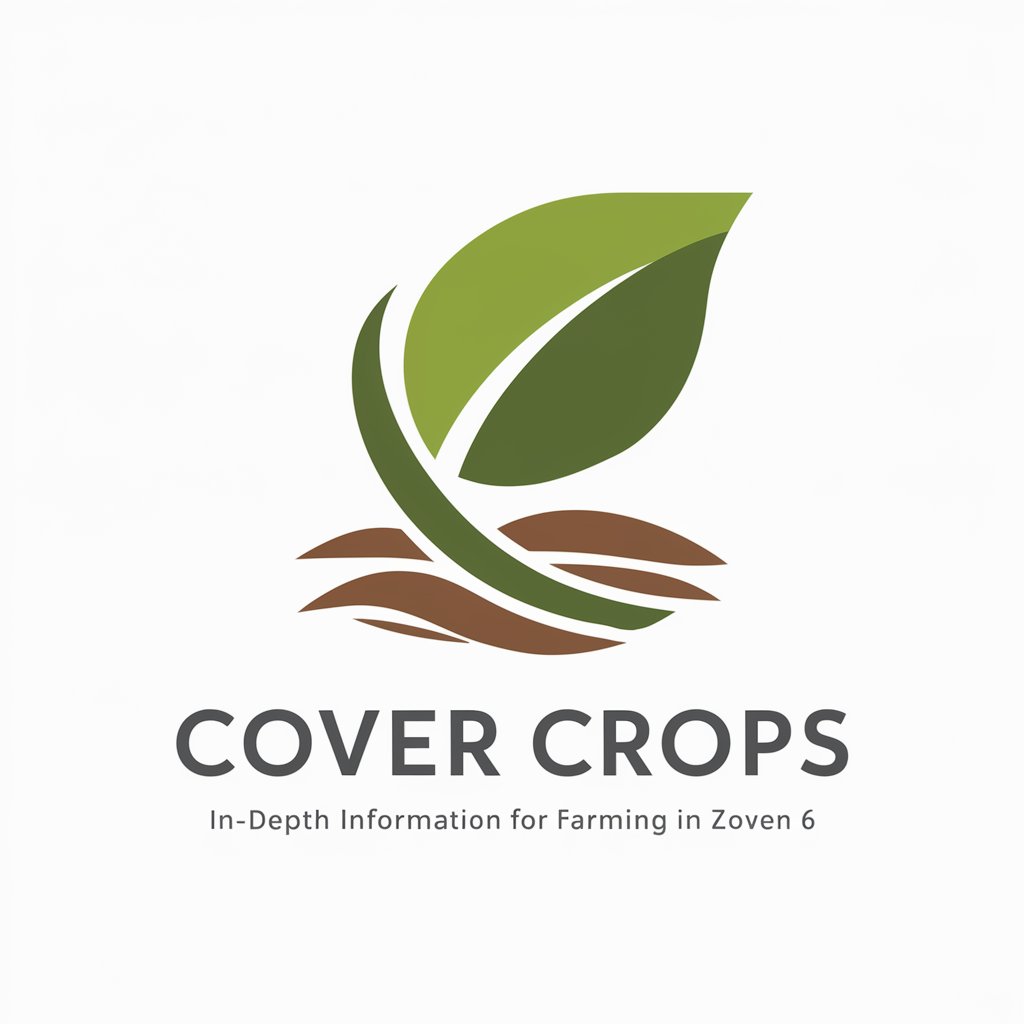Cover Crops - Cover Crop Benefits Guide

Welcome! Let's explore the benefits of cover crops in Zone 6.
Enhance Soil, Sustain Future
What are the best cover crops for Zone 6?
How can cover crops improve soil health?
Can you explain the benefits of using cover crops in sustainable farming?
What are the ideal cover crops for preventing soil erosion in Zone 6?
Get Embed Code
Introduction to Cover Crops
Cover Crops, as an AI, specializes in providing detailed information about cover crops, particularly in the context of Zone 6 farming. This AI is designed to assist farmers and agriculturalists in understanding, selecting, and managing cover crops effectively to enhance soil health, prevent erosion, and improve farm sustainability. Scenarios where this is particularly useful include advising on the best cover crops for specific soil types, planning crop rotations that include cover crops for improved soil fertility, and offering strategies for integrating cover crops into existing farming practices to maximize benefits such as nitrogen fixation and weed suppression. Powered by ChatGPT-4o。

Main Functions of Cover Crops
Soil Erosion Control
Example
Rye and hairy vetch are often used to control soil erosion. Their robust root systems help stabilize the soil, preventing runoff during heavy rains.
Scenario
A farmer dealing with sloping fields might use these cover crops in off-seasons to keep the soil intact and fertile.
Enhancement of Soil Fertility
Example
Legumes like clover and peas are known for fixing atmospheric nitrogen, enriching the soil for the following crops.
Scenario
In rotations, legumes might be planted after cash crops like corn to replenish nitrogen levels, reducing the need for synthetic fertilizers.
Weed Suppression
Example
Oats and barley grow quickly and densely, effectively outcompeting weeds and reducing the need for herbicides.
Scenario
A vegetable grower might plant these cover crops during fallow periods to naturally suppress weed populations before planting spring crops.
Ideal Users of Cover Crops Services
Small to Medium-sized Farm Owners
These farmers benefit from the sustainability improvements and cost reductions associated with effective cover crop use. They often need to optimize the productivity of their soil and reduce reliance on chemical inputs.
Organic and Sustainable Agriculture Practitioners
Individuals focused on eco-friendly farming practices value cover crops for their role in natural pest management and soil enhancement without the use of synthetic chemicals.
Agricultural Educators and Students
These users leverage Cover Crops to teach and learn about sustainable agricultural practices, understanding the ecological benefits of cover crops within agricultural ecosystems.

Steps to Use Cover Crops
1
Sign up for a free trial at yeschat.ai, offering access without the need for login or a subscription to ChatGPT Plus.
2
Choose the right type of cover crop based on your local climate conditions, soil type, and the specific benefits you want to achieve such as erosion control, nitrogen fixation, or weed suppression.
3
Prepare your field by clearing it of existing weeds and debris to ensure that the cover crop seeds have direct contact with the soil, which is crucial for good germination.
4
Sow the seeds at the recommended rate and time for your chosen cover crop. Use appropriate equipment to ensure even distribution and optimal soil coverage.
5
Manage the cover crop by monitoring growth and terminating the crop at the right time to maximize benefits such as improving soil structure, increasing nutrient availability, or preparing the field for the next cash crop.
Try other advanced and practical GPTs
David Goggins
Empower your mindset, conquer your limits.

Get me out of poverty
Empowering Financial Freedom with AI

Uchiha Advisor
Strategize wisely with AI

What Drives Poverty?
Unlocking Insights into Poverty with AI

UN SDGs: 1 No Poverty
Empower Decisions with AI Insight

Voice of Poverty
Empower your understanding of poverty with AI.

Cover Creator
Design book covers effortlessly with AI.

Cover Craft
Craft Your Sound into Art

Cover Letter Generator
Craft Your Perfect Cover Letter, AI-Powered

Book Cover
Transforming Ideas into Coloring Pages

Cover Artist
Crafting Visual Stories with AI

Cover Letter
Personalized Cover Letters, AI-Powered

Detailed Q&A on Cover Crops
What are cover crops?
Cover crops are plants grown primarily to benefit the soil rather than for crop yield. They help manage soil erosion, improve soil fertility, suppress weeds, enhance water availability, and control pests and diseases.
How do cover crops improve soil health?
Cover crops enhance soil structure, increase organic matter, promote soil microbial activity, improve water infiltration and retention, and can fix atmospheric nitrogen in the soil when leguminous cover crops are used.
Can cover crops be used with all types of farming?
Yes, cover crops are versatile and can be incorporated into various farming systems including conventional, organic, no-till, and reduced-till practices to enhance sustainability.
When should cover crops be planted?
The ideal planting time for cover crops varies depending on the type and your climatic zone, but generally, they should be sown after the harvest of the main crop and before the planting of the next.
What are the challenges of using cover crops?
Challenges include the initial cost of seeds, the need for additional management practices, potential competition with primary crops for resources, and the timing of sowing and termination to maximize benefits.
